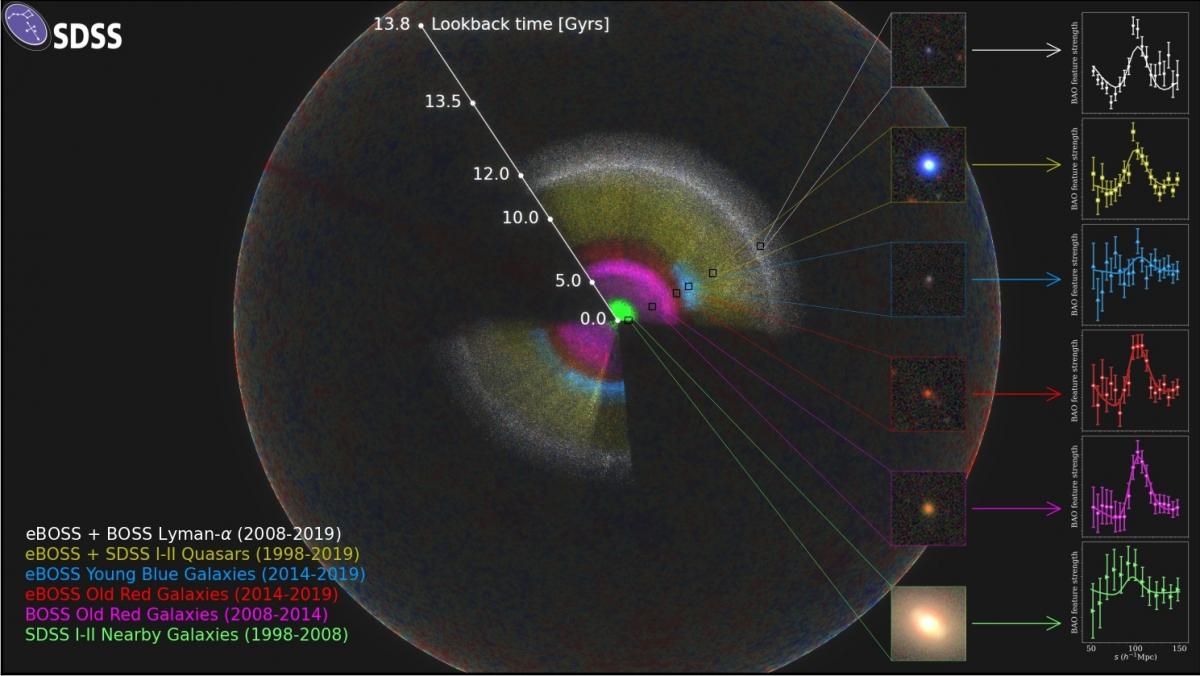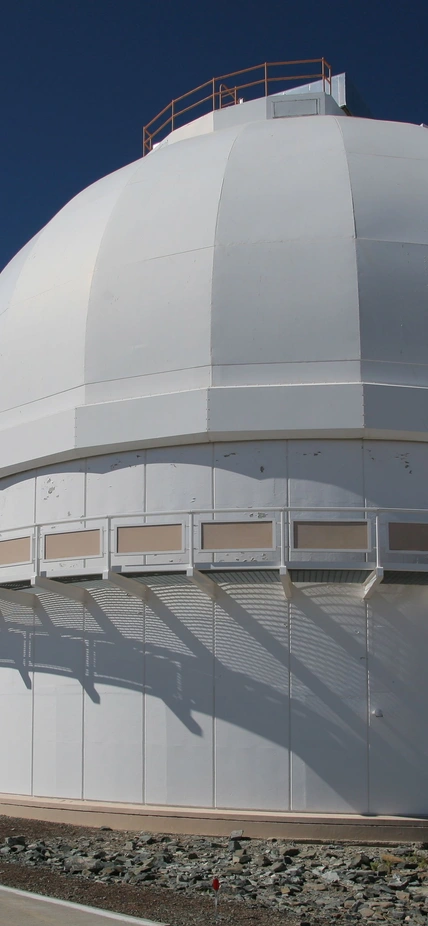Pasadena, CA— Filling in the most-significant gaps in our understanding of the universe’s history, the Sloan Digital Sky Survey (SDSS) released Sunday a comprehensive analysis of the largest three-dimensional map of the cosmos ever created.
The survey, of which Carnegie is an integral member, has been one of the most successful and influential in the history of astronomy. It operates out of both Apache Point Observatory in New Mexico, home of the survey’s original 2.5-meter telescope, and Carnegie’s Las Campanas Observatory in Chile, where it uses Carnegie’s du Pont telescope.
The new results come from the extended Baryon Oscillation Spectroscopic Survey (eBOSS), an international collaboration of more than 100 astrophysicists that is one of the SDSS’s component surveys. At the heart of the new results are detailed measurements of more than two million galaxies and quasars covering 11 billion years of cosmic time.
“We know both the ancient history of the universe and its recent expansion history fairly well, but there’s a troublesome gap in the middle 11 billion years,” says cosmologist Kyle Dawson of the University of Utah, who led the team announcing these results. “For five years, we have worked to fill in that gap, and we are using that information to provide some of the most substantial advances in cosmology in the last decade.”
This map represents the combined effort of more than 20 years. A close look reveals the filaments and voids that define the structure in the universe, starting from the time when it was only about 300,000 years old. Using it, researchers measure patterns in the distribution of galaxies, which give several key parameters of our universe to better than one percent accuracy.

The map also shows that expansion of the universe began to accelerate about six billion years ago and has continued to get faster and faster ever since, believed to be due to the mysterious force called “dark energy.” In particular, the eBOSS team’s measurement of the current rate of the universe’s expansion—called the Hubble Constant after Carnegie astronomer Edwin Hubble, who discovered that the universe has been growing continuously since it exploded into being during the Big Bang—is about 10 percent lower than some values found from distances to nearby galaxies. The high precision of the eBOSS data means that it is highly unlikely that this mismatch is due to chance, and the rich variety of eBOSS data gives us multiple independent ways to draw the same conclusion.
There is no broadly accepted explanation for this discrepancy in measured expansion rates, but one exciting possibility is that a previously unknown form of matter or energy from the early universe might have left a trace on our history.
eBOSS leaves the puzzle of dark energy, and the mismatch of local and early universe expansion rate, as a legacy to future projects. In the next decade, future surveys may resolve the conundrum, or perhaps, will reveal more surprises.
Meanwhile, with continued support from the Alfred P. Sloan Foundation and institutional members, the SDSS is nowhere near done with its mission to map the universe. Karen Masters of Haverford College, spokesperson for the current phase of SDSS, described her excitement about the next one.
“The Sloan Foundation Telescope and its near-twin at Las Campanas Observatory will continue to make astronomical discoveries mapping millions of stars and black holes as they change and evolve over cosmic time.”
The SDSS team is busy building the hardware to start this new phase and is looking forward to the new discoveries of the next 20 years. Its fifth generation, SDSS-V, directed by Carnegie astronomer Juna Kollmeier, will map the entire sky.
“SDSS has transformed the way we do astronomy, with each phase pushing the boundary of what is considered possible,” said Kollmeier. “The eBOSS cosmology results are no exception, filling in an important gap in our measurements of cosmic evolution and demonstrating the collaborative power of the SDSS consortium.”
The SDSS team is busy building the hardware to start this new phase and is looking forward to the new discoveries of the next 20 years.
